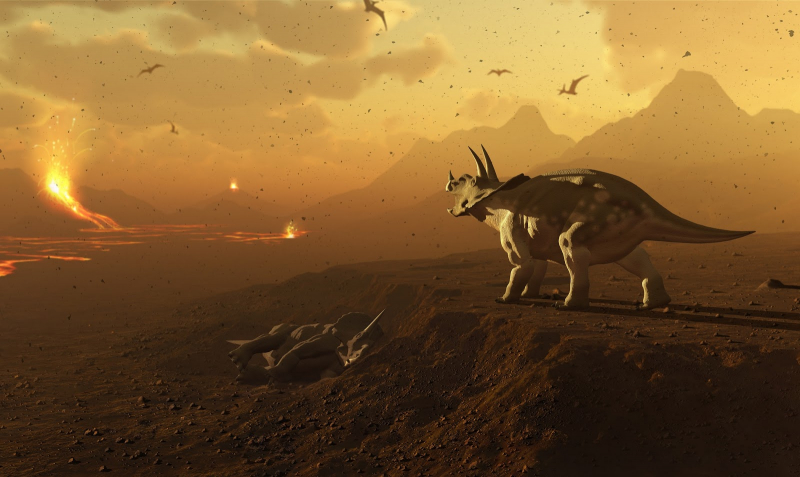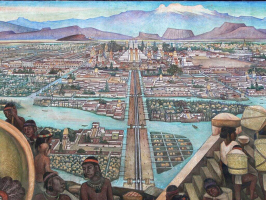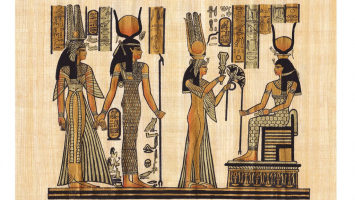Top 6 Major Mass Extinctions
The fossil record demonstrates that something odd occurred millions of years ago. From terrestrial megafauna to microscopic aquatic creatures, a vast variety ... read more...of species perished abruptly. A mass extinction occurs when a significant number of creatures perish at the same time. As new species emerge, existing species become extinct on the planet. Over the previous 500 million years, more than 90% of the species are thought to have been extinct. Extinction events are lethal. 250 million years ago, the Permian Triassic extinction occurred. It gave rise to the dinosaur age. During the "Great Dying", 96% of marine species were depleted. The diversity of life at sea is depicted by the fossils from the ancient seafloor. Now, let's explore the major mass extinctions that you may not know.
-
Ordovician-Silurian extinction, global extinction event that occurred during the Ordovician Period's Hirnantian Age (445.2 million to 443.8 million years ago) and the Silurian Period's subsequent Rhuddanian Age (443.8 million to 440.8 million years ago), eradicating an estimated 85 percent of all Ordovician species. In terms of the proportion of marine groups impacted, this extinction event is second only to the one that occurred around 251 million years ago at the border between the Permian and Triassic eras. The Ordovician-Silurian extinction event was nearly twice as severe as the K-T extinction event that happened at the end of the Cretaceous Period, around 66 million years ago, and is notable for bringing the dinosaurs to an end.
The extinction appears to have happened in stages. Some paleontologists believe that an early phase affecting graptolites, brachiopods, and trilobites occurred prior to the end of the Ordovician Period, before the major drop in sea level, and that it was caused by falling carbon dioxide levels associated with silicate rock erosion, which may have triggered a global cooling phase. However, most paleontologists agree that glaciation over the African and South American regions of Gondwana, as well as the accompanying drop in sea levels and changes in ocean current patterns, caused enormous disturbances to temperatures and ecosystems. The sea level decline would have emptied the huge epicontinental waters, reducing the accessible habitat for creatures that thrived in such environments.
The spread of cool-water brachiopod fauna into tropical latitudes was followed by glaciation in several locations, indicating the start of considerable global cooling. The rise in sea level caused by global warming and retreating glaciers during the Rhuddanian Age of the Silurian Period caused a third period of extinction. There was no iridium concentration around the extinction that would imply a bolide (meteorite or comet) impact like the one discovered at the end of the Cretaceous Period.

Science Photo Library 
Science Photo Library -
The Late Devonian extinction was a series of extinction events in the Late Devonian Epoch that combined constituted one of the five biggest mass extinction events in Earth's history. The phrase largely alludes to the Kellwasser event (also known as the Frasnian-Famennian extinction), which happened about 372 million years ago at the border between the Frasnian and Famennian stages of the Devonian Period. 19% of all families and 50% of all genera went extinct. The Hangenberg event (also known as the end-Devonian extinction) happened 359 million years ago, putting the Famennian and Devonian periods to a close as the Earth entered the Carboniferous Period.
Plants and insects had populated the region by the Late Devonian. Corals and stromatoporoids developed huge reefs in the oceans. Euramerica and Gondwana were merging into what would become Pangaea. Only marine life appears to have been harmed by the extinction. Brachiopods, trilobites, and reef-building species were particularly hard struck, with the last virtually totally disappearing. The reasons of these extinctions remain unknown. Changes in sea level and ocean anoxia, presumably caused by global cooling or marine volcanism, are among the leading possibilities.
The impact of a comet or similar extraterrestrial body, such as the Siljan Ring occurrence in Sweden, has also been proposed. According to some statistical research, the decline in variety was driven more by a fall in speciation than an increase in extinctions. Rather than a single event, this might have been triggered by invasions of cosmopolitan species. Placoderms were severely harmed by the Kellwasser event and nearly extinct during the Hangenberg event, although most other jawed vertebrates were less severely afflicted. Agnathans (jawless fish) were in decline long before the end of the Frasnian, and the extinctions nearly wiped them off.

newdinosaurs.com 
newdinosaurs.com -
The Permian-Triassic extinction event, also known as the Latest Permian extinction event, the End-Permian Extinction, and colloquially as the Great Dying, occurred approximately 251.9 million years ago and marked the boundary between the Permian and Triassic geologic periods, as well as the Paleozoic and Mesozoic eras. With the loss of 57% of biological groups, 83% of genera, 81% of marine species, and 70% of terrestrial vertebrate species, it is the Earth's most catastrophic known extinction event. It was the greatest known insect mass extinction.
There is evidence for one to three separate extinction pulses or stages. The major reason of extinction, according to scientists, was the massive amount of carbon dioxide generated by the volcanic eruptions that formed the Siberian Traps, which raised world temperatures and caused widespread anoxia and acidity in the seas. Contributing variables include the thermal degradation of hydrocarbon reserves, including oil and coal, initiated by the eruptions, as well as methane releases by unique methanogenic microbes, perhaps nourished by minerals distributed in the eruptions.
Studies in Bear Lake County, near Paris, Idaho, and nearby sites in Idaho and Nevada revealed a relatively quick rebound in a localized Early Triassic marine ecosystem, taking around 3 million years to recover, whereas an unusually diverse and complex ichnobiota is known from Italy less than a million years after the end-Permian extinction, implying that the impact of the extinction was felt less severely in some areas than others. Differential environmental stress and instability after the extinction event have been proposed as explanations for the disparities in the rate of biotic rebound between various areas and habitats.

Tumblr 
SciTech Daily -
The Late Triassic extinctions, which occurred mostly between the Norian and Rhaetian stages (approximately 208 million years ago), resulted in the extinction of many amphibian and reptile species on land and many invertebrate, fish, and reptile species in the oceans. These extinctions, along with the environmental shifts that preceded them, paved the ground for dinosaurs to take over terrestrial domination. The biodiversity losses were not caused by a single event, but rather occurred gradually as a result of a worldwide perturbation in the carbon cycle. This anomaly was most likely caused by significant greenhouse gas emissions from large-scale volcanic activity, which might have led to a spike in global temperature that many species couldn't withstand.
The changes in ecosystems in this section of the UK and central European water basins have long been used as a predictor of what transpired, with a dramatic decline in organic carbon-13 regarded to be an early marker of the atmospheric changes that led to this catastrophe. The biological make-up of the ocean entered a transitional period as a result of these changes, but the researchers show that the extinction catastrophe began in earnest tens of thousands of years later, during the late Rhaetian.

University of Washington 
Fine Art America -
The Cretaceous-Paleogene extinction event, which occurred roughly 66 million years ago, resulted in the loss of three-quarters of all plant and animal species on Earth. No tetrapods weighing greater than 25 kilos survived, with the exception of select ectothermic species such as sea turtles and crocodilians. It signaled the end of the Cretaceous Period and, with it, the Mesozoic period, while also ushering in the Cenozoic era, which continues to the present day.
As a result, mammals and birds (avian dinosaurs!) dominated the land. The overwhelming scientific agreement is that the major cause of the extinction was the impact of a massive extraterrestrial object. An asteroid fragment with an estimated diameter of 10 kilometers (6.2 miles) collided with Earth, unleashing massive waves of heat, dust, and soot over the world. The flying soot obscured sunlight, causing ecosystems to fail. A large impact crater in the Yucatán Peninsula in northern Central America is the major evidence of this event.
However, the extinction brought evolutionary opportunities: in its aftermath, several groups saw exceptional adaptive radiation—rapid and prolific divergence into new forms and species within damaged and empty ecological niches. Mammals, in particular, evolved novel forms throughout the Paleogene, including horses, whales, bats, and primates. Avians, a few species of ground and water fowl that radiated into all present bird species, were the only dinosaurs that survived. Teleost fish and maybe lizards were among the other taxa that radiated.

ThoughtCo 
blogspot.com -
The Holocene extinction, sometimes known as the Anthropocene extinction, is the ongoing extinction catastrophe that occurred during the Holocene period. Extinction events have affected many groups of bacteria, fungi, plants, and animals, including mammals, birds, reptiles, amphibians, fish, and invertebrates, and have affected not just terrestrial but also vast sectors of marine life. Because of the widespread destruction of biodiversity hotspots such as coral reefs and rainforests, as well as other locations, the great majority of these extinctions are assumed to be undocumented, since the species are undiscovered at the time of extinction, which goes unreported. The present rate of species extinction is believed to be 100 to 1,000 times greater than natural background extinction rates, and it is growing.
Over the last 100-200 years, biodiversity loss and species extinction have accelerated to the point where most conservation biologists believe humanity has either entered or is on the verge of entering a period of mass extinction. As a result, the event is also known as the sixth mass extinction or sixth extinction. The Holocene extinction includes the disappearance of large land animals known as megafauna, starting at the end of the last glacial period. Megafauna outside of the African mainland, which did not evolve alongside humans, proved highly sensitive to the introduction of human predation, and many died out shortly after early humans began spreading and hunting across the Earth.
The most widely accepted argument holds that human overhunting of animals exacerbated existing stress conditions as Holocene extinction coincided with human settlement of many new locations throughout the world. Although it is debatable how much human predation and habitat loss contributed to their demise, some population decreases, like as the extinction events in New Zealand and Hawaii, have been closely associated with the advent of human activity. Aside from humans, climatic change may have had a role in megafaunal extinctions, particularly near the end of the Pleistocene. Overall, the Holocene extinction can be related to human environmental effect. The Holocene extinction continues into the 21st century, with human population growth, increasing per capita consumption,and meat production, among others, being the primary drivers of mass extinction.

Holocene Extinction - YouTube 
nexusnewsfeed.com



























